BOISE (Day 5 - part 8)
#3 House (or South Wing) opened in 1928. It looked the same as #2 Cell House but was the first one with indoor plumbing.


Original designs called for one super large cell house that was to be divided into separate sections... bathing room, barber shop, tailors, visitor's waiting room, hospital. Inmate workers quarried and cut over 6,500 rocks during construction. After years of building, officials decided to change the plan and instead build two separate buildings (#2 and #3 cell houses, aka North and South Wings).
Then in 1909, after having been under construction for 10 years, the warden deemed it unusable. Thick bars on the windows caused poor ventilation and the cell doors required prisoners to lock themselves inside. Workers removed the entire interior of the building and using the stones, built a large horse barn.

The hollow building was then used as a stone cutting area to finish #2 House (completed in 1911). It then stood vacant until 1920, at which point it was transformed into a shoe factory. By 1923, 100 pairs of shoes were produced per day, outfitting inmates in Idaho, New Mexico, Utah and other western states. In 1924, the shirt factory building opened, redirecting prisoner work.
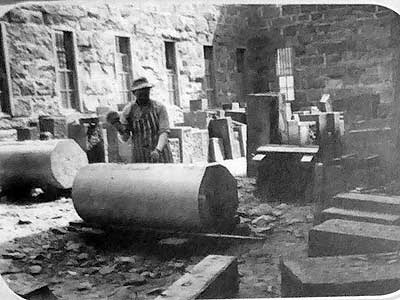

Stone cutting ... shoe factory
In 1926, the prison population reached maximum capacity, one again calling for the completion of #3 House. It opened in 1928. It had lights, hot and cold running water, saw-proof steel, and could house up to 160 inmates (32 two-man and 24 four-man cells). It also provided better safety for the guards who could not control one or all cells in each wing.

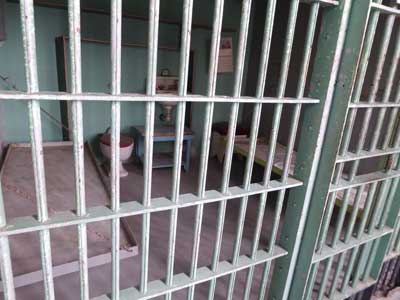


Rooms with 2 inmates (note how the top bunk swings up against the wall). Inmates painted their cells and left drawings on the walls.




Rooms with 4 inmates
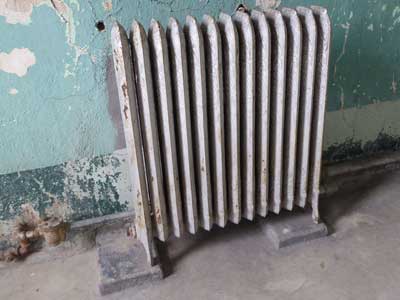

A heater ... the view outside into #4 Cell House
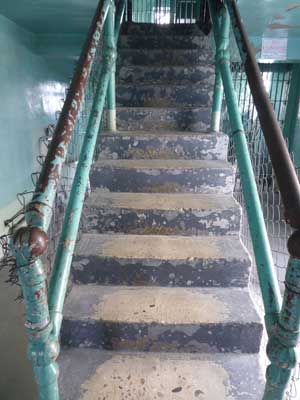
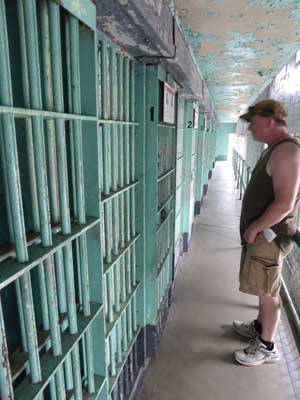
More cells upstairs


A 4-person room ... the swinging hinge of the upper bunk
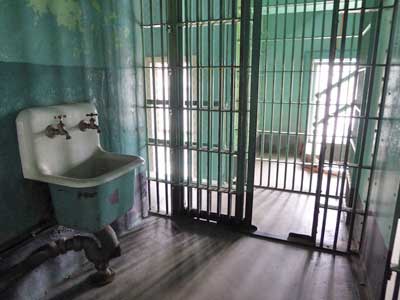

We got to enter a cell room.
A few of the inmates in 1973:



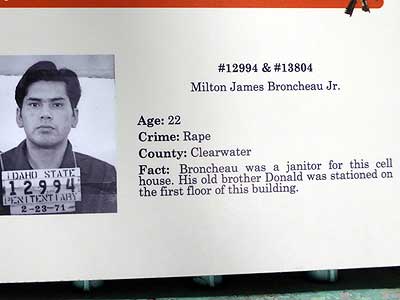
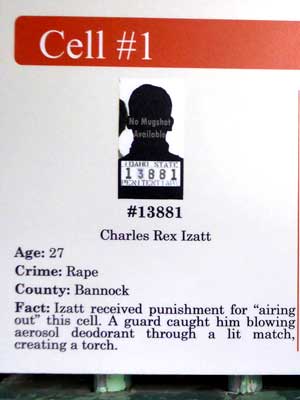



In 1950, incarcerated laborers began construction of #4 Cell House, the largest and most modern one in the compound. It could hold up to 320 men in 80 four-man cells. It was built entirely of concrete, with modern ventilation and heating and a centralized locking system. Inmates also cut steel, built cabinets, wired electricity and installed plumbing. The warden claimed this helped rehabilitate them by teaching them trade skills.
By 1952, the first two levels were completed and 100 inmates were transferred from other overcrowded cell houses. However, a riot broke out in the prison yard and the construction scaffolding was set on fire. Police fired over 60 rounds of tear gas, dispersing about 300 convicts. The riot took 4 hours to put down and caused construction delays. It was completed the next year.
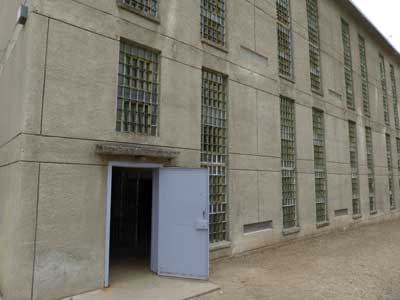


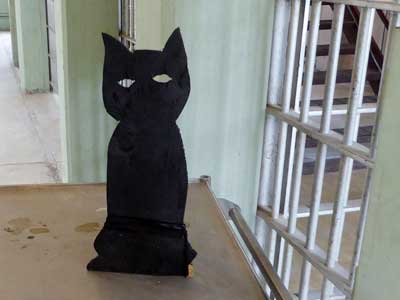
Dennis was a kitten found in the prison barn by an inmate in 1952. Even though pets weren't allowed, the guards allowed him to stay. Dennis roamed the yard and everyone, guards and inmates alike, loved him. After 16 years of service, Dennis died in his sleep in 1968. The inmates performed a funeral in his honor, even giving him a headstone. He is the only "inmate" buried within the prison walls.


Modern heaters
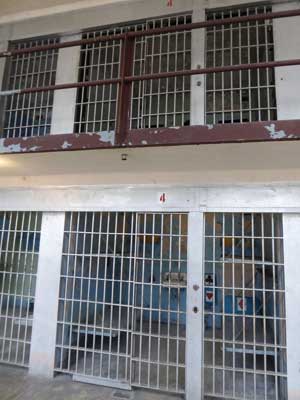


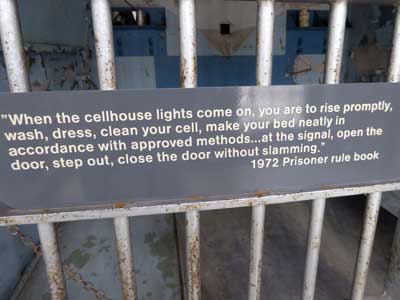






Grooming standards varied with the times. In 1972, hair was to be neat and not below the upper edge of a shirt collar, while sideburns were not to be below the lobe of the ear and trimmed to avoid bushiness.
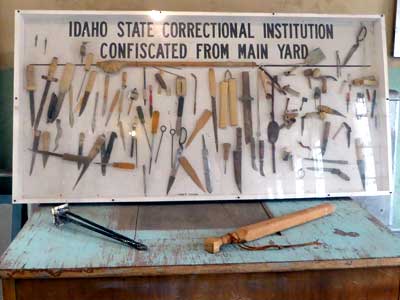

Contraband is a general term for any illegal object in prison. Cigarettes, coffee, extra commissary food, illegal drugs and alcohol as served as money in the prison 'black market'. Those who could control the exchange, often through violent means, gained power and influence, even outside the prison walls. In order to protect their belongings, inmates made weapons... slingshots, metal swords, even a plastic toothbrush could be sharpened by rubbing it on the cement floor. Due to shakedowns (unannounced cell inspections), prisoners rarely kept weapons in their cells. Instead they were hidden or buried in the prison yard.

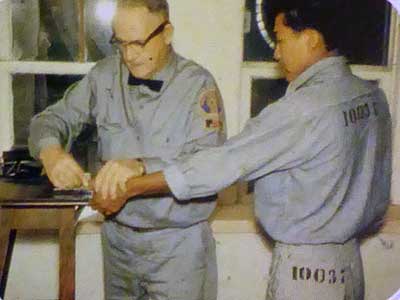
Processing: A new prisoner was often called a 'fish' (since like a fishbowl, prisoners had no privacy). Upon arrival, they gave up all personal items, undressed, was deloused, and then given shoes and a uniform in a one-size-fits-all. He was photographed, had his measurements and fingerprints taken, and notes were taken about any distinguishing tattoos, scars or marks. His blood was also taken to determine overall health and possible diseases (which might require segregation). Over the first several weeks, he was interviewed (to help with cell house assignment and job classification) and given a psychological analysis (to determine if he was violet, unstable or needed to be sent to an asylum).

Guards used this walkway to monitor inmates and manage the plumbing system.
return • continue

